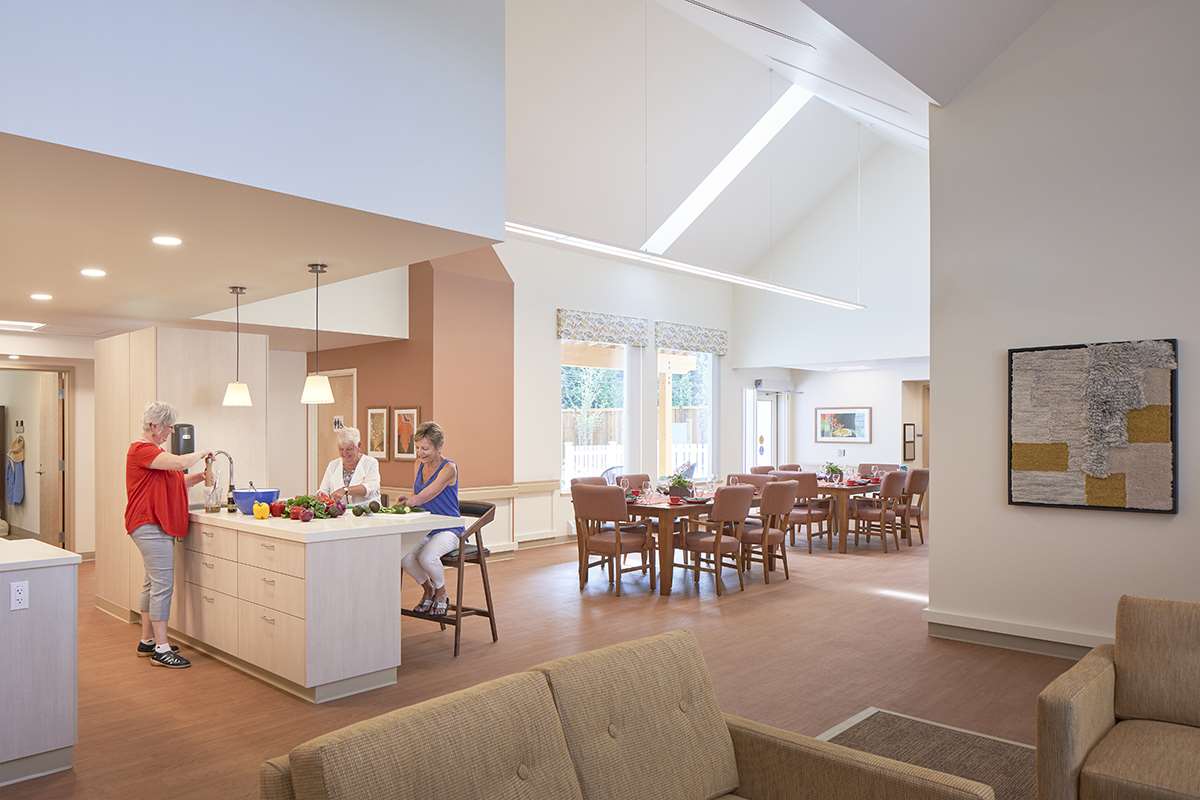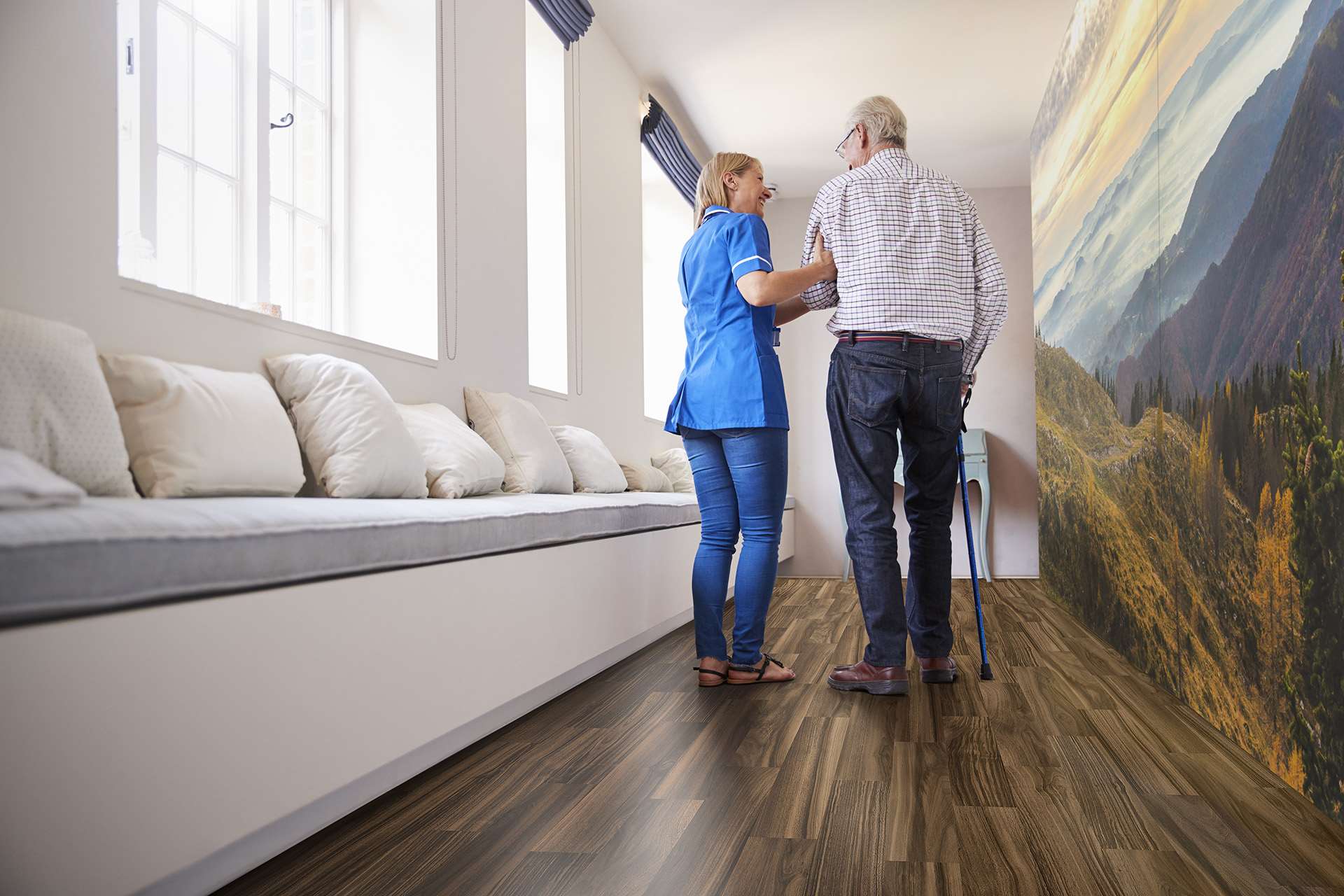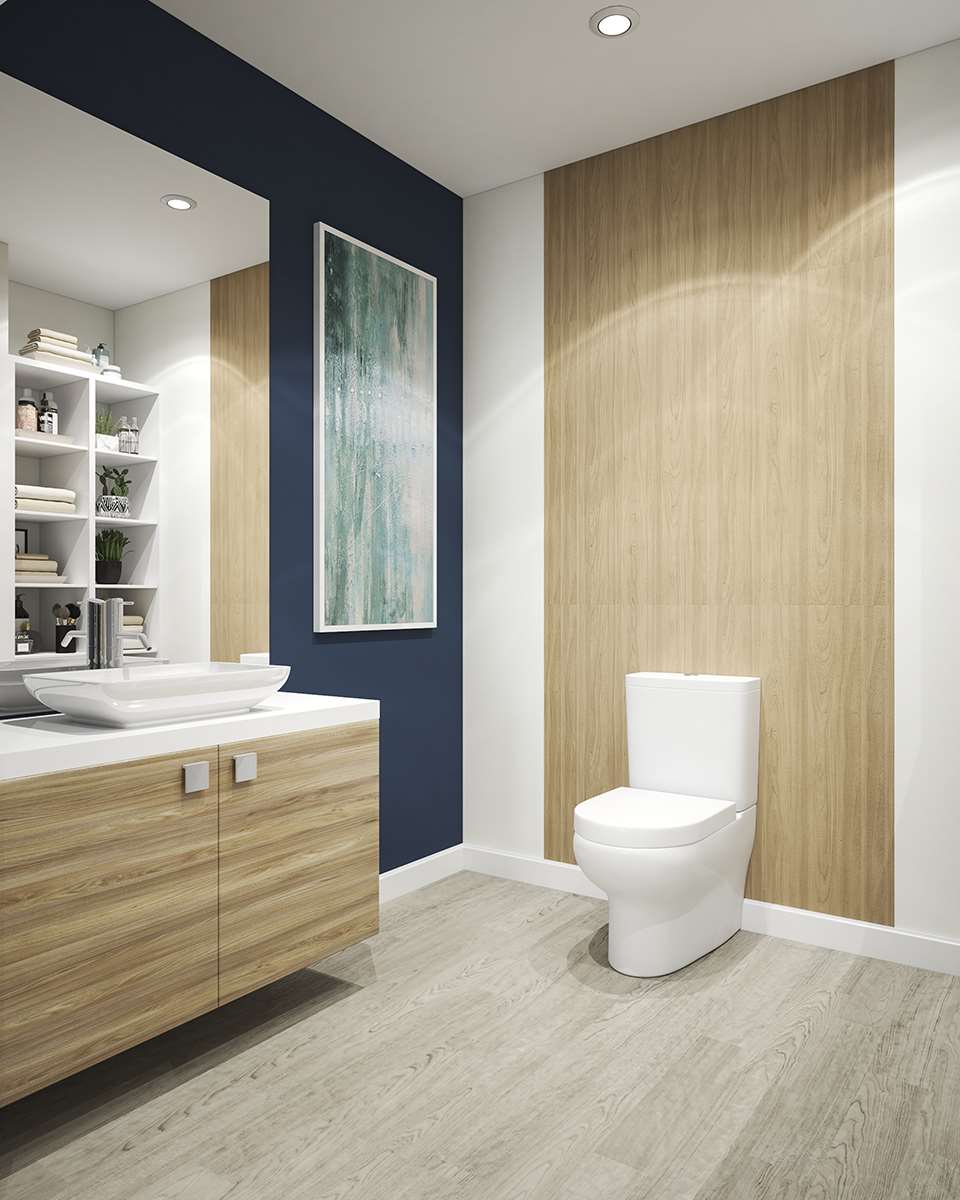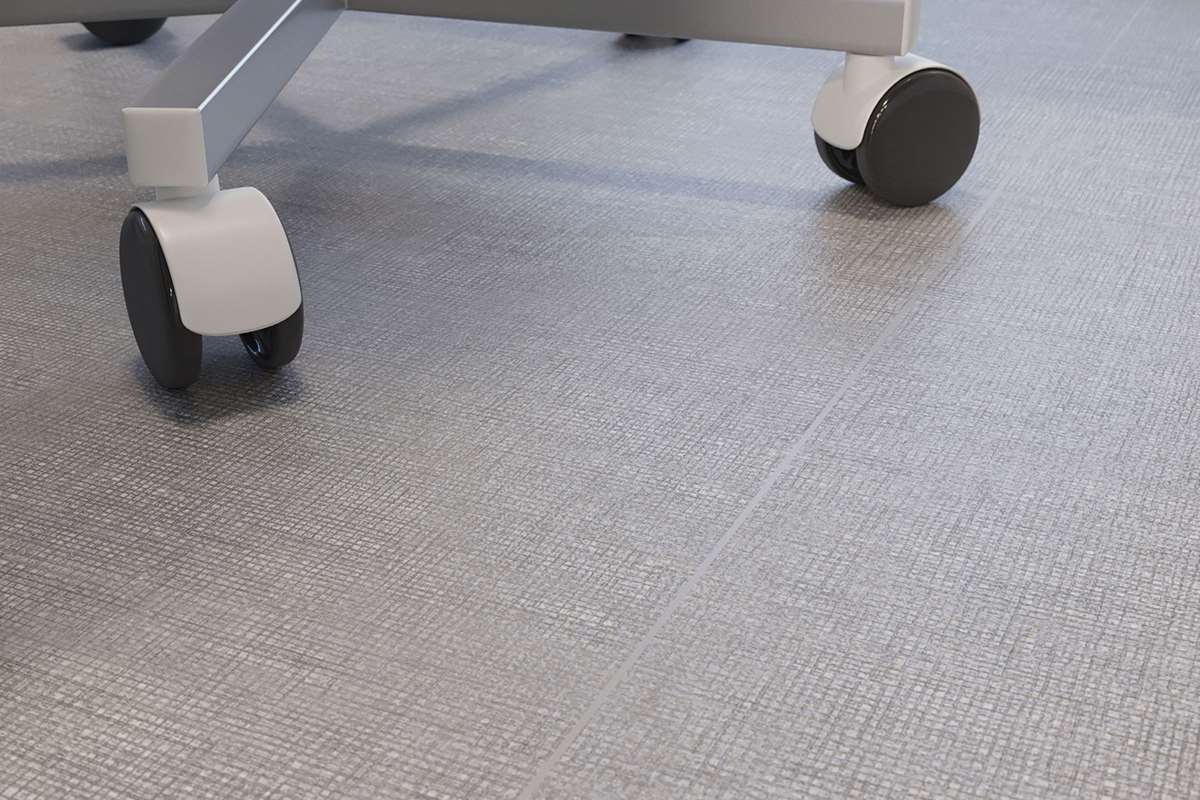
Can't see the region you're looking for? You can find a list of our global locations here
Flooring and walls play a key role in creating attractive, welcoming environments. In senior living communities, flooring and walling must be more than pleasant to look at. They must provide a safe, stable, and durable foundation that can handle the health needs of aging and fragile residents. .
Whether the community is small or large, assisted living, memory care or retirement, the choice of floors and walls is critical because you need to minimize risks to the health and safety of your residents and staff. Communities that care for seniors and have residents with physical disabilities have even more reason to pay special attention to the properties of the material installed.

From resident showers to neighborhood common areas, Altro can help keep vulnerable people safe. Designed for senior living functionality, Altro flooring and wall cladding combines safety and durability with warm colors and tones that enhance the residents’ living environment.

North America’s rapidly growing 65+ population has drastically impacted senior living and the processes behind the design and architecture of its communities.
In order to design effectively for our senior population, it’s vital to understand the many ways that aging is likely to affect residents and their perceived physical environment. The physiological changes associated with growing old alter how we perceive the environment around us and are often accompanied by declines in our sense of sight, hearing, touch, smell and taste. When these senses are dulled, the environment is more difficult to understand and navigate, making normal daily tasks stressful and frustrating.
As people age, they can lose their peripheral vision, undergo color and night vision changes, or can experience problems with glare and blurred vision. In addition, the aging eye lens changes, making all colors appear more yellow and about 20% less saturated.
Walls and floors with similar colors can make it difficult for seniors to differentiate the beginnings and ends of each surface. Contrasting colors between all surfaces, especially with steps and landings, can reduce accidental trips and falls. In bathrooms, for example, contrasting colors between the floor and the toilet can help residents navigate safely and help reduce the risk of a fall.
A person’s ability to move is impacted by the aging process, which can result in unsteadiness while walking, difficulty getting in and out of a chair, or even a dangerous fall. Any muscle weakness or joint problems can also contribute to mobility issues. To decrease falls, the proper flooring and lighting, with handles and other safety measures, must be included.
Architects and designers will be increasingly called upon to design supportive, livable, helpful, and safe senior living accommodations to remove stress and confusion from an aging person’s everyday life.
In creating functional spaces for aging residents, designers need to understand vision changes. Although this adds complexity to color and pattern selection, certain overriding principles still remain:

In healthcare, evidence-based design is a field of study that deals with how the environment can influence a person’s wellbeing. It is believed that this kind of design can make a real difference for people as they age, removing some of the stress, frustration and confusion from everyday living.
Designers are taking the results of these studies and applying them into their designs in order to achieve similar outcomes. Design choices, such as flooring color or location of a sink, can lead to achieving a measurable goal of reducing disorientation, loss of balance and the risk of falling.

It’s not enough to consider color alone when differentiating between areas. When the difference between floors, walls, steps and doorways is too subtle, it can cause enough uncertainty to result in a fall.
Although contrasting colors create visual changes that help differentiate space, it is actually the amount of light reflected from surfaces that is the main factor in determining a person’s ability to identify different surfaces.
Contrasting stair nosing combined with quality safety flooring reduces the risk of slips and trips on stairs. Use contrasting colors or a stripe at the top and bottom of stairways to indicate the final step.
LRVs (Light Reflectance Values)
Light Reflectance Values (LRVs) are the best way to measure contrast. Every material has an LRV marked on a scale of 1-100 — 1 being dark (absorbing light), and 100 being light (reflecting light).
To meet requirements set by the FGI Guidelines, there should be at least a 30 point variance in LRVs between adjacent surfaces such as floors and walls.
Conversely, where different types of flooring are used alongside each other and there is no step between them, it’s equally important to ensure that the LRVs of the materials are as similar as possible to avoid creating the illusion of a step where there is none.
Altro flooring is extremely durable. Its indentation resistance and surface abrasion results enable the flooring to resist scuffing and other damage caused by wheelchairs, heavy equipment, walking sticks or other walking aids.
Altro Whiterock wall cladding is highly impact-resistant and known to withstand damage normally caused by wheelchairs and equipment being moved within a home.

Commercial warranties of up to 20 years attest to the durability of Altro flooring and walling.
Residents of senior living facilities are already at a higher risk than the rest of the population of contracting an infection due to age and increased vulnerability to illness. Therefore, it is necessary to maintain a clean and healthy indoor environment to ensure a high quality of life for residents and peace of mind for their loved ones. To meet requirements set by the FGI Guidelines:
As mentioned in some of the earlier sections, the FGI Guidelines for Residential Health, Care, and Support Facilities go into considerable detail on requirements to prevent falls:
Our senior living mockup demonstrates a typical installation in a senior living environment, including a residential-looking cove base. The flooring has been cut away to show the transition between materials and Altro Tegulis wall panel is shown on the shower side which includes our recommended flash clamping drain.
Our senior living mockup with Easy Drain showcases our Altro Aquarius flooring with a linear clamping drain, popular in the senior living environment. The backside of the mockup mirrors what is found in our other mockup featuring a mixture of more residential-looking finishes
If you are viewing our floor and wall solutions as an attendee of The Center for Health Design's virtual workshop, we thank you for your participation and are proud to be a sponsor of this event. We wish you all good luck in your treasure hunt efforts! #Altro4Seniors